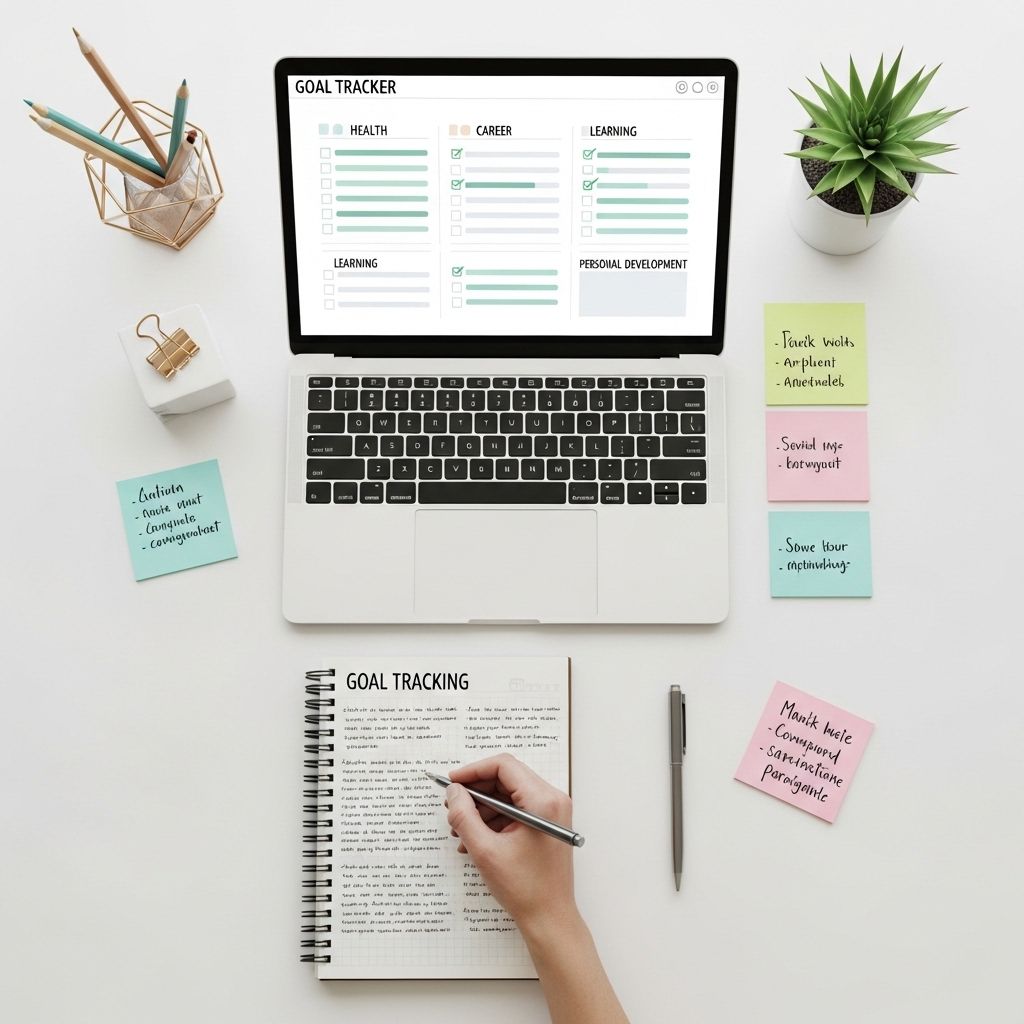In today’s fast-paced world, setting and achieving goals has become more crucial than ever. Whether it’s a personal aspiration or a professional milestone, tracking progress can make a significant difference. A goal tracker serves as a powerful tool to visualize your progress, stay motivated, and adjust your approach as needed. In this article, we will explore the essential steps to build a goal tracker that suits your needs.
Table of Contents
Choosing the Right Platform
Before diving into the specifics of designing your goal tracker, you need to decide on the platform where it will be built. Here are some popular options:
- Spreadsheet Software: Tools like Microsoft Excel and Google Sheets offer flexibility and ease of use.
- Task Management Tools: Applications such as Trello, Asana, or Notion can be tailored for goal tracking.
- Custom Web Application: For tech-savvy users, building a web app using HTML, CSS, and JavaScript allows for complete customization.
Defining Your Goals
Next, you need to clearly define the goals you want to track. Here’s how to approach this:
SMART Goals Framework
Utilizing the SMART criteria can help you formulate effective goals:
- Specific: Clearly define what you want to achieve.
- Measurable: Ensure your goal is quantifiable.
- Achievable: Set realistic goals that are attainable.
- Relevant: Make sure your goals align with your long-term aspirations.
- Time-bound: Set a deadline to create a sense of urgency.
Designing Your Goal Tracker
Once you have defined your goals, it’s time to design your goal tracker. Here are some elements to consider:
Layout
The layout of your goal tracker will depend on the platform chosen. A spreadsheet might have a tabular format, while a web app could use a card-based layout. Key components to include:
- Goal Description
- Start Date
- End Date
- Progress (% completed)
- Notes
Sample Table Layout
| Goal | Start Date | End Date | Progress (%) | Notes |
|---|---|---|---|---|
| Run a marathon | 2023-01-01 | 2023-10-01 | 40 | Training well |
| Learn Spanish | 2023-02-15 | 2023-12-15 | 20 | Using Duolingo |
Tracking Progress
Regularly tracking your progress is vital to stay on course. Here are some strategies:
Weekly Check-ins
Designate a specific day each week to review your goals. During this time, update your progress, reflect on challenges faced, and adjust your strategies if necessary.
Visualizations
Consider incorporating visual elements to make your tracker more engaging:
- Graphs: Use bar graphs or pie charts to visualize progress over time.
- Color-Coding: Assign colors for different status levels (e.g., red for behind schedule, green for on track).
Staying Motivated
Staying motivated can be one of the biggest challenges when pursuing your goals. Here are some tips to keep your spirits high:
Celebrate Small Wins
Break your goals into smaller milestones and celebrate each accomplishment. This will provide a sense of achievement and keep you motivated.
Accountability Partners
Share your goals with friends or family, and consider finding an accountability partner to keep each other in check.
Using Technology to Enhance Your Tracker
If you’re building a custom web application or using advanced task management tools, there are several features that can enhance your goal tracker:
Reminders and Notifications
Integrate reminders to keep yourself accountable and ensure you don’t miss any deadlines:
- Set reminders for weekly check-ins.
- Receive notifications for deadlines approaching.
Integrating with Other Apps
Consider linking your tracker with other applications to streamline the process:
- Integrate with calendar apps for automatic date tracking.
- Link with fitness apps if your goals relate to health and wellness.
Review and Reflect
At the end of your specified timeframe, take a step back and review your goals:
- What worked well?
- What didn’t go as planned?
- How can you improve your strategy for the next goal cycle?
This reflection is crucial for continual improvement and ensuring that you grow with each goal-setting experience.
Conclusion
Building a goal tracker is a valuable endeavor that can significantly enhance your ability to achieve your objectives. By defining your goals, designing a tracker that works for you, and utilizing technology, you can stay organized and motivated. Remember, the journey to achieving your goals is just as important as the destination, so embrace the process and celebrate your progress along the way!
FAQ
What is a goal tracker and why is it important?
A goal tracker is a tool or system that helps individuals monitor their progress towards specific goals. It is important because it provides motivation, accountability, and clarity, making it easier to achieve desired outcomes.
What are the key components of an effective goal tracker?
An effective goal tracker typically includes clear goal definitions, measurable milestones, deadlines, progress tracking methods, and review mechanisms to assess performance.
Can I create a goal tracker using digital tools?
Yes, digital tools like spreadsheets, specialized apps, or project management software can be used to create an efficient and customizable goal tracker.
How often should I update my goal tracker?
You should update your goal tracker regularly, ideally on a weekly or monthly basis, to ensure that you are staying on track and to make necessary adjustments.
What are some tips for staying motivated while using a goal tracker?
To stay motivated, set realistic goals, celebrate small achievements, review progress regularly, and adjust your strategies as needed to overcome obstacles.








